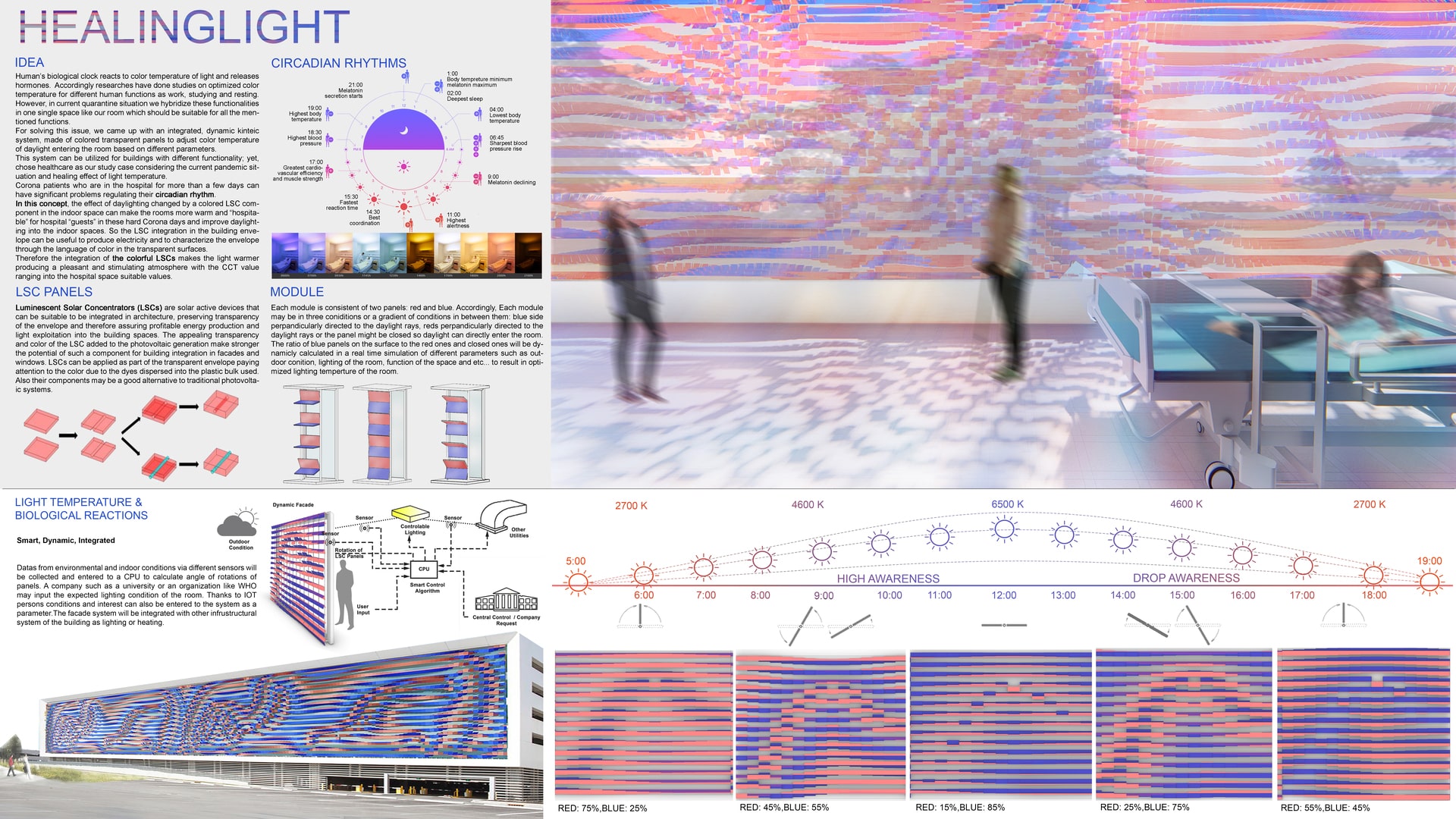Project Description
Corona virus pandemic lead to governments, companies and people’s shift in social distancing and using virtual connection as tools of connection. Many predicts this will probably will be our new general way of interaction in near future. However, this new situation has caused some disorders in people’s lives’ routine. People may need to work, study, sleep and do their activities based on a different time zones than the one they are located at. This may result in interrupting human’s circadian rhythm, decrease their productivity or even cause to physical or mental diseases. Human’s biological clock reacts to color temperature of light and releases hormones. Light with a high color temperature has different physiological effects in humans compared with light having a low color temperature. Accordingly researches have done studies on optimized color temperature for different human functions as work, study, resting or sleeping. However, in current situation we hybridize these functionalities in one single space like our room which should be suitable for all the mentioned functions. For solving the mentioned issue, we came up with an integrated, dynamic facade system, made of colored (blue and red) transparent panels to adjust color temperature of daylight entering the room based on different parameters. Needless to say this system can be utilized for buildings with different functionality; yet, chose healthcare as our study case considering the current pandemic situation and healing effect of light temperature. Corona patients who are in the hospital for more than a few days can have significant problems regulating their circadian rhythm which will be explained in the next paragraph. Daylight from windows can help greatly. In hospitals and healthcare centers, it’s important that patients and staff have access to cool white light that’s similar to daylight. According to the studies we did for getting a good color temperature for hospital rooms, we understood that we need a color temperature between 3500 to 5000 in hospital rooms. Biological rhythms that repeat approximately every 24 hours are called circadian rhythms. Light is the main stimulus that helps the circadian clock, and thus circadian rhythms. Two effects of light have been interrogated extensively in human circadian and sleep research: firstly, the acute suppression of melatonin in response to light exposure and secondly the ability of light exposure to shift circadian phase. As mentioned before, Corona patients have some trouble regulating their sleep. The effects of light on the phase of the circadian clock depend on the timing of light exposure. This is formally summarized in the phase response curve (PRC), which describes the amount of phase shift (in minutes and hours) achieved by exposure of light at a given circadian phase. Roughly speaking, the effect of morning light is that it advances the clock, while evening and night light delays the clock. Clinical Studies Show Red Light Helps You Sleep Better. Red light is ideal for evenings because it has a low color temperature, far lower than regular sunlight. You can be immersed in red light at night without giving your body a jolt and altering your internal clock like blue light does. If you’re having trouble sleeping and you’re surrounding yourself with unnatural blue light every night, that’s likely a big factor. Switching to natural red light in the evenings can help your body ease into its sleep cycle more naturally. We tried to integrate these studies with one special kind of material which is LSC. Luminescent Solar Concentrator (LSCs) are solar active devices that can be suitable to be integrated in architecture, preserving transparency of the envelope and therefore assuring profitable energy production and light exploitation into the building spaces. The appealing transparency and color of the LSC added to the photovoltaic generation make stronger the potential of such a component for building integration in facades and windows. LSCs can be applied as part of the transparent envelope paying attention to the color due to the dyes dispersed into the plastic bulk used. Also their components may be a good alternative to traditional photovoltaic systems. In our approach, the effect of day lighting changed by a colored LSC component in the indoor space can not only make the rooms warmer and “hospitable” for hospital “guests” in these hard Corona days and improve day lighting into the indoor spaces, but also it can make new opportunity to reduce the photovoltaic surface, by locating on the edges of the component which can reduce the related costs. So the LSC integration in the building envelope can be useful to produce electricity and to characterize the envelope through the language of color in the transparent surfaces. Therefore, the integration of the colorful LSCs makes the light warmer producing a pleasant and stimulating atmosphere with the CCT value ranging into the hospital space suitable values.
